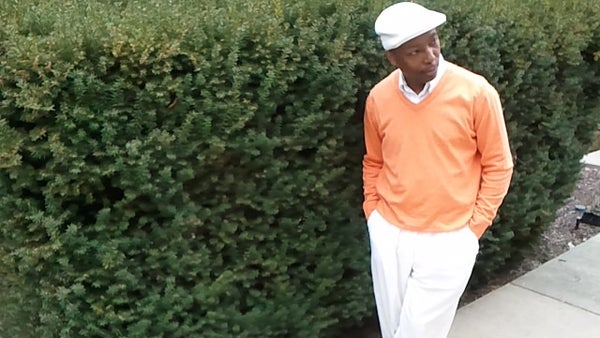Questions about race and culture fascinating, necessary, not threatening

(Image courtesy of Ron Tinsley.)
Seeing everything negatively through the lens of race and culture has taken me years to shed. My experiences as an African American growing up in North Philadelphia in the 1970s shaped many of my ideas. But leaving my neighborhood also shaped them just as much.
This is part of a series of essays about what it’s like to be you in Philadelphia. In an attempt to discuss issues of race and ethnicity respectfully and productively, we are inviting readers to share their stories with the NewsWorks audience.
Seeing everything negatively through the lens of race and culture has taken me years to shed. My experiences as an African-American growing up in North Philadelphia in the 1970s shaped many of my ideas. But leaving my neighborhood also shaped them just as much.
TV communicated certain values that I embraced: White people are always nice, and black people are always funny. So, when the mailman or utility guy came to our apartment, I reacted positively. The Brady Bunch taught me well.
But I also could not avoid the negative portrayals of black people on the news and in entertainment. I also noticed the corner stores were changing from African-American to Asian merchants. Language and cultural barriers made it difficult to communicate.
Struggling with negative perceptions
But many of my thoughts on race and culture changed when I attended Conwell Middle Magnet School in the early 1980s. During this time, Kensington was a working-class Irish and Polish neighborhood. In my two years there, I was threatened and called all kinds of racial slurs. I was only 11 years old. What made it worse is that the intimidation came from adults.
The school was diverse at that time, and I had good friends (white, black, Latino, etc.) who often helped me escape the neighborhood after 4 p.m. But this experience made me afraid to travel around certain parts of Philly and colored my perceptions of white people. Once I graduated, I chose a high school in my neighborhood to attend.
During my teen years, I started attending a multiracial church in my community, which helped me work through some of my negative perceptions and stereotypes. It was here that I met my future wife, who is white. Her dad grew up Amish in Ohio, moved his family to North Philadelphia, and became a Mennonite pastor.
We started dating when I was a junior in college in the late 1980s. This was not a great time to be an interracial couple. Several racial incidents around the nation revealed the ugly face of racism and reminded me of Philly’s ugly history.
Benefits of a multiracial environment
My wife grew up in North Philadelphia most of her life. Her parents taught her to appreciate the importance of communal bonds, to see herself as part of a larger group. The allowed her and her sisters to be in their neighbors’ homes and vice versa, simulating an extended family concept. The result was that my wife’s identity, fashion sense and language were impacted by the positive aspects of African-American culture. She is the only white woman (besides her sisters) I have ever met who can jump double dutch.
So, often, she is mistaken as a Latina or an African American with light skin. The reason why I did not consider us an interracial couple is because we have so much in common. But I still struggled to explain myself to family and friends, and I could not help but wonder if I appeared insecure.
We were married and 1993, and we have four beautiful children. The race and culture questions tended to fade as we intentionally located ourselves in mostly African-American or multiracial communities, and we focused on raising our family. But as our children grew, we have become aware that they are facing a different set of questions.
Asking questions, drawing from experience
I realize that I, for a long time, I viewed race and culture questions as threatening. But my experience working with urban youth and my graduate education (a master’s degree in urban studies) helped me to see these questions as necessary and fascinating.
As an adjunct professor, I teach social science courses on urban youth culture, contemporary social problems and media education. What I realize is that many of my experiences prepared me to answer questions surrounding race, culture and poverty. There were periods in my life where I was simply angry, but that never solved the issue. So, I started drawing from my experiences growing up poor with my mother and two brothers. I combined this with my sociological observations and training and started writing about it.
Since I have been working with urban youth for the last 20 years, we have had great discussions. But I still recognize that perceptions can hurt. So I find ways to address their self esteem and connect it to more positive outcomes. Today, I still view some parts of Philadelphia through this lens, but I also know that new residents have come to broaden the discussion. I am thankful for that.
—
Ron Tinsley is a social sciences professor at Eastern University in St. Davids, Pa. He blogs at prophetiksoul.com.
WHYY is your source for fact-based, in-depth journalism and information. As a nonprofit organization, we rely on financial support from readers like you. Please give today.

